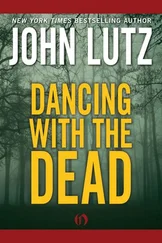John Wohlstetter - Sleepwalking with the Bomb
Здесь есть возможность читать онлайн «John Wohlstetter - Sleepwalking with the Bomb» весь текст электронной книги совершенно бесплатно (целиком полную версию без сокращений). В некоторых случаях можно слушать аудио, скачать через торрент в формате fb2 и присутствует краткое содержание. Город: Seattle, Год выпуска: 2012, ISBN: 2012, Издательство: Discovery Institute Press, Жанр: История, military, Политика, Публицистика, на английском языке. Описание произведения, (предисловие) а так же отзывы посетителей доступны на портале библиотеки ЛибКат.
- Название:Sleepwalking with the Bomb
- Автор:
- Издательство:Discovery Institute Press
- Жанр:
- Год:2012
- Город:Seattle
- ISBN:978-1-93659-906-6
- Рейтинг книги:3 / 5. Голосов: 1
-
Избранное:Добавить в избранное
- Отзывы:
-
Ваша оценка:
- 60
- 1
- 2
- 3
- 4
- 5
Sleepwalking with the Bomb: краткое содержание, описание и аннотация
Предлагаем к чтению аннотацию, описание, краткое содержание или предисловие (зависит от того, что написал сам автор книги «Sleepwalking with the Bomb»). Если вы не нашли необходимую информацию о книге — напишите в комментариях, мы постараемся отыскать её.
RICHARD PERLE, Resident Fellow, American Enterprise Institute and Assistant Secretary of Defense, 1981–1987 Sleepwalking with the Bomb
Sleepwalking with the Bomb — читать онлайн бесплатно полную книгу (весь текст) целиком
Ниже представлен текст книги, разбитый по страницам. Система сохранения места последней прочитанной страницы, позволяет с удобством читать онлайн бесплатно книгу «Sleepwalking with the Bomb», без необходимости каждый раз заново искать на чём Вы остановились. Поставьте закладку, и сможете в любой момент перейти на страницу, на которой закончили чтение.
Интервал:
Закладка:
Public perceptions were fueled by factual inaccuracies and outright absurdities in the fictional works. In Strangelove American bombers, once aloft, proceed to their targets when not recalled to base before they reach their designated standby stations aloft; in reality the opposite has been true for over 50 years, with bombers turning back unless given an affirmative order to proceed from authorized commanders. [55] Albert Wohlstetter was instrumental in conceiving the “fail-safe” protocol. Perhaps due to the film and its notoriety, it later was renamed “positive control.”
In Fail-Safe the pilots fly bombers at speeds of 2,000 mph at impossibly low altitudes, skimming terrain in the dead of night; they also are instructed to disregard a recall order coming even from the president, as his voice might be faked. And Moscow refuses for hours to accept information on how to destroy the bombers headed its way out of national pride! None of this was or is true or plausible. Alas Babylon ’s escalation scenario has the Russians launch an all-out strike because a single base is damaged with one conventional warhead. On the Beach posits nuclear-armed states launching weapons in such massive numbers so as to destroy the human race. Only an entire collection of Armageddon-inspired fanatics might do this. As for Seven Days in May , its coup scenario is utterly implausible, because America’s military has a civilian command structure and a deeply entrenched culture of deference to civilian authority.
Later scenarios were based upon more realistic prospects. In Blink of an Eye , former secretary of defense William Cohen sketched out a scenario involving a possible terrorist nuclear bomb. His real-world senior-level crisis management experience lent gripping realism to his account of how government officials would act in extreme crisis.
Yet in the end, a nuclear crisis will arise in a context likely unforeseen in many aspects, and will impose stress upon leaders and world politics of a kind never seen in human history. Nuclear events might well prove stranger than nuclear fiction.
APPENDIX 2:
IMPROVING CONTROL OVER NUCLEAR WEAPONS
IN 1961 A B-52G CRASHED IN GEORGIA WITH A PAIR OF HYDROGEN bombs. By one account, recovery teams discovered that five of six safety switches had been flipped on one of the two hydrogen bombs it carried. That bomb was perhaps 1,000 times more powerful than the Nagasaki bomb. The plane crashed in a rural area. Still, had the bomb gone off, it would have caused massive loss of life in several states, via dispersal of millions of tons of lethal fallout.
This particular account, however, has been disputed. The alternate version holds that because the bombs were equipped with Permissive Action Links (PAL) trigger locks, a random series of stresses could not have flipped five of the six switches needed to detonate the weapon. This version appears more likely correct, as later-model bombs were equipped with PALs.
Either way, such a scary mishap showed how far the U.S. had to go in protecting its nuclear weapons from accidental detonation. Efforts to control use of bombs had begun not long before with behavior protocols, as L. Douglas Keeney details in 15 Minutes . In 1956 the Atomic Energy Commission instituted a “two-man rule” for control of every nuclear weapon: “A minimum of two authorized persons, each capable of detecting incorrect procedures… will be present during any operations requiring access to the weapon.” In 1957 aircrews of nuclear bombers began carrying envelopes printed with a code word. When the Strategic Air Command base station gave a two-word code, the pilot opened the envelope. If the word inside matched the SAC’s second word, it meant to continue past the fail-safe point.
A second 1957 innovation was the “sealed-pit” bomb. Before, when a flight crew heard the authorization to proceed, its members had to insert the core of a bomb into its canister. In a sealed-pit bomb, the bomb canister already contained the core.
In all, the U.S. ultimately implemented 24-link, chained safeguards, each of which must be surmounted to detonate a weapon. There are weak and strong links, as Keeney explains. An electrical “capacitor” that can send an electric signal to detonate the bomb would be an example of a “weak link.” The heat of a plane crashing and burning would melt the capacitor, disabling the bomb. A mechanical switch that has to be physically closed before detonation can proceed would be an example of a “strong link.”
During the Cuban Missile Crisis, U.S. control was modest at best and Soviet control virtually nonexistent—local commanders could ignore Moscow’s orders, and communication channels were minimal and slow. There was no technological control, only the human nuclear chain of command. Both superpowers saw that to reduce the risk of war by accident or by a field commander’s impulsive act in a crisis, better arrangements for control over weapons of mass destruction were essential.
In the mid-1960s, the first major technical control steps followed the ideas of behavioral protocols. The installation of the Hot Line after the Cuban Missile Crisis created a channel of instantaneous long-distance direct Teletype and telephone communication between super-power leaders for the first time, enabling them to gauge risk of conflict and escalation more acutely and take steps to minimize it. With the new technology of built-in trigger locks (PALs), leaders were finally able to restrict final authorization to a small level of senior commanders acting upon direct instructions from the president. Within U.S. missile silos, two launch keys 12 feet apart had to be turned within a two-second period to fire a missile. The U.S. made security technologies and techniques available to the Soviets, to improve their secure storage and thus reduce the risk of accidental or unauthorized nuclear war.
But the Soviets, to the end of the Cold War, relied upon human controls—orders from superiors. Since then they have adopted technical controls as well. In August 1991, during the coup that toppled Mikhail Gorbachev, Soviet military officials made sure the rebels did not have control over nukes. When Boris Yeltsin emerged, control was given to him.
Nuclear safety locks use methods such as limiting the number of tries to a few (like password log-ins on computers), with astronomically large possible codes to defeat “brute force” crunching of every possible combination. Environmental sensors are implanted inside U.S. missile warheads—the warhead locks unless the sensors have detected stresses comparable to those in ballistic missile or air-dropped bomb flight.
A distant commander must authorize the launch—the President or such senior commanders as the Commander-in-Chief designates. With U.S. weapons based in NATO countries, independent authorization to launch must be received by the host government as well. This situation leads to some interesting results. In the case of Eastern European NATO countries, it undermines Russian assertions that defensive missiles based in Eastern Europe might be fired at Russia. The prospect that approval would be granted by any sane Eastern European leader, given the certitude of an apocalyptic Russian response, is virtually nil. No order thought insane by its recipients would be obeyed.
The case of Western European NATO countries during the Cold War was the mirror image of Eastern Europe today. Both British prime minister Thatcher and West German chancellor Helmut Schmidt turned down a U.S. offer of a “dual key”—a trigger lock allowing them to veto a launch from their soil. Both feared that the Soviets might conclude that the weapons would never be launched, because the host country would not fire U.S. missiles at Russia, thus weakening the credibility of U.S. “extended deterrence” of possible Soviet attacks against its allies. The allies wanted U.S. consultation before launch, but not a power embedded in technology to veto a launch outright.
Читать дальшеИнтервал:
Закладка:
Похожие книги на «Sleepwalking with the Bomb»
Представляем Вашему вниманию похожие книги на «Sleepwalking with the Bomb» списком для выбора. Мы отобрали схожую по названию и смыслу литературу в надежде предоставить читателям больше вариантов отыскать новые, интересные, ещё непрочитанные произведения.
Обсуждение, отзывы о книге «Sleepwalking with the Bomb» и просто собственные мнения читателей. Оставьте ваши комментарии, напишите, что Вы думаете о произведении, его смысле или главных героях. Укажите что конкретно понравилось, а что нет, и почему Вы так считаете.












